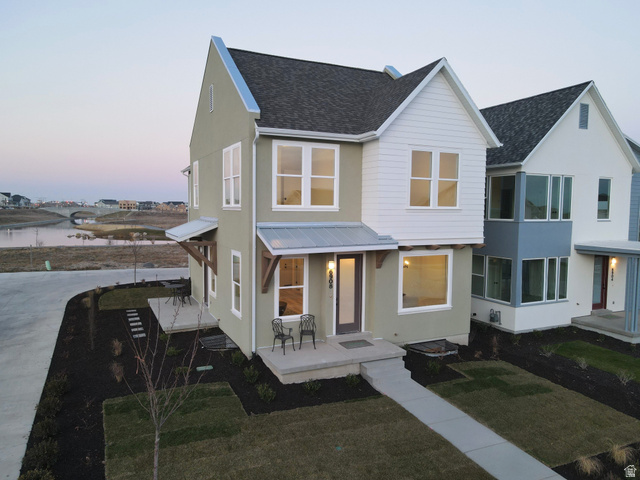Buying new construction in Utah offers modern layouts, energy-efficient systems, and neighborhoods built for today's lifestyles. However, the polished model homes and slick sales centers can hide recurring pitfalls that add thousands of dollars and months of stress.
In Utah’s competitive real estate market, smaller homes can still make a big impression, especially when they’re styled and arranged to feel open, bright, and functional. Many buyers today are looking for efficient, well-designed spaces rather than large footprints, and sellers can take advantage of that trend with thoughtful updates. A home doesn’t need to be expanded or remodeled to feel more spacious; often, small improvements are enough to transform the entire atmosphere. For some homeowners, that may include simplifying décor, rethinking furniture arrangements, or even exploring modern storage solutions that help remove clutter and create breathing room before listing. With the right approach, even the coziest Utah home can feel open and inviting.
Start by Creating Clear, Unobstructed Pathways
One of the easiest ways to make a home feel larger is to ensure every room has a natural flow. When furniture is positioned in a way that blocks walking paths or interrupts sight lines, rooms instantly feel smaller. Repositioning sofas, removing chairs that aren’t essential, or relocating bulky pieces can dramatically shift how a room feels.
In smaller Utah homes, especially those built in the 90s and early 2000s with segmented layouts, opening up pathways can make the entire main floor feel more interconnected.
Light Makes All the Difference
Utah’s natural light is one of its greatest assets, and buyers notice it immediately during showings. Homes that feel bright always seem more spacious, regardless of square footage. Simple changes help maximize that effect:
-
Swapping heavy drapes for sheer curtains
-
Keeping blinds open during the day
-
Using mirrors to reflect natural light
-
Choosing warmer, softer bulbs for interior fixtures
Even smaller rooms appear more open when light flows freely and shadows are minimized. If a room lacks strong natural light, strategically placed floor lamps or wall sconces can make a noticeable difference.
Use Color Thoughtfully
Neutral, soft tones tend to create a sense of openness. Whites, sand tones, light grays, and muted greens often work well in Utah homes because they complement the state’s natural landscapes and pair easily with various design styles. Darker tones can be beautiful, but they should be used sparingly in small spaces since they absorb light and shrink the room visually.
A fresh coat of paint is one of the fastest, most cost-effective ways to make a home feel refreshed and more expansive.
Simplify What’s on Display
Clutter makes even large rooms feel tight. In smaller homes, decluttering becomes essential. Rather than filling shelves and surfaces with décor, choose a few meaningful items and give them space to breathe. This helps rooms feel intentional rather than overwhelmed.
Removing visual noise also allows architectural features, windows, trim, flooring, or built-ins, to stand out. When buyers walk through a home, their eyes naturally move toward open spaces, not crowded corners.
Choose Furniture That Fits the Space
Image from Freepik
Oversized sectionals, heavy dressers, and bulky dining tables can overpower a small Utah home. Right-sizing furniture makes the room feel balanced and more functional. For example:
-
In a small living room, a streamlined sofa and two lightweight chairs often feel more open than a large sectional.
-
In a smaller dining area, a round table can improve movement and visual flow.
-
In bedrooms, replacing a large bed frame with something more minimal can instantly make the room feel airier.
Furniture doesn’t have to be tiny, it just needs a scale that suits the room.
Create Multipurpose Spaces
With remote work on the rise and families spending more time at home, Utah buyers appreciate flexibility. Smaller homes benefit from rooms that serve more than one purpose. A corner of the living room can function as a mini office, or a guest room can double as a reading nook. Using furniture that includes hidden storage or pieces that can be folded or tucked away adds practicality without occupying extra floor space.
When buyers see versatility, they see possibility.
Maximize Vertical Space
When floor space feels limited, the walls become some of your biggest assets. Tall bookshelves, floating shelves, wall-mounted hooks, or vertical cabinets draw the eye upward and create the illusion of height. This technique is especially effective in entryways, bedrooms, and kitchens where storage tends to spill into living areas.
Vertical design also helps maintain cleanliness and organization, two qualities that make smaller homes feel more spacious.
Embrace Minimalism in Hallways and Transitional Spaces
Narrow hallways, stair landings, and small entryways can easily feel cramped. Keeping these areas clean, simple, and free of unnecessary décor helps maintain openness throughout the home. A single piece of artwork or a mirror is often enough to create interest without overwhelming the space.
These transitional spaces set the tone as buyers move from one room to another, so simplicity goes a long way.
Open Up the Home by Reducing Heavy Visual Barriers
Small design shifts can change how a home flows. For example:
-
Replacing a dark shower curtain with clear glass makes a bathroom feel larger.
-
Using a light-colored area rug helps define a living room without visually closing it off.
-
Opting for open shelving in one part of the kitchen can prevent the space from feeling boxed in.
The goal is to create openness without altering the structure of the home.
A smaller Utah home doesn’t need major renovations to feel bigger. With thoughtful styling, intentional layout changes, and smart organizational choices, even modest spaces can feel bright, open, and inviting. For sellers, these adjustments help potential buyers imagine themselves living comfortably in the home, something that often translates into stronger offers and faster sales.
For design inspiration and insight into making small homes feel spacious and well-balanced, the International Interior Design Association (IIDA) offers guides and visual resources, a helpful reference for homeowners refining their spaces before listing.













